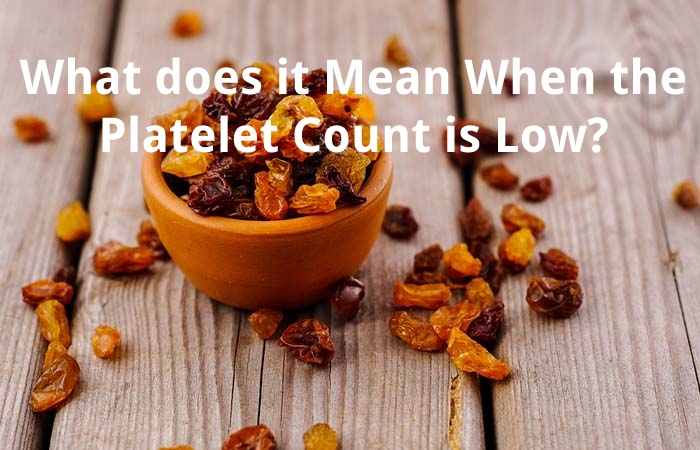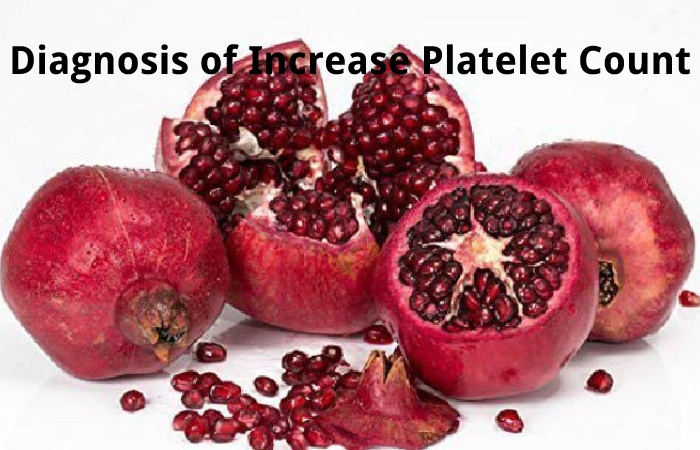Table of Contents
How to Increase Platelet Count?
An Increase Platelet Count is a blood test that measures the regular number of platelets in the blood. Platelets help blood clot, so cuts heal and prevent excessive hemorrhages. High or low levels of platelets can be a sign of a severe condition. The mean platelet count test is typically part of a complete blood count (CBC) test. A total blood count reveals essential information about the number of blood cells in the body. Platelets, also called thrombocytes, are fragments of more giant cells produced in the bone marrow called megakaryocytes.
What is a Platelet Count Test?
- A complete blood count test may include a platelet count test.
- The test gives a count of blood platelets per microliter (MCL).
- The measurement is the average number of platelets a person has per microliter.
- The ideal platelet range is 150,000 to 400,000 per MCL in most healthy people
- Low platelet count is known as thrombocytopenia. Conversely, a high platelet count is recognized as thrombocytosis.
The test can be done alone or as part of a complete blood count test. The best doctor will usually do a platelet count test if they suspect a person has a disorder affecting their platelet count.
What to Imagine?
- The test includes drawing blood from a vein in your arm or hand.
- Obtaining a blood sample from a vein takes a few minutes and usually causes minimal discomfort. Some people may feel dizzy or nauseous while having their blood haggard or shortly after. Captivating slow, deep breaths is usually enough to calm down.
- Some persons may develop a small mark or bruise. Most people feel fine after the test, but some experience mild pain at the needle stick site for 1 to 2 days.
- A technician puts the blood sample into a machine that counts the number of platelets and produces a report of the findings.
Is it Safe?
The test is very safe, and problems are rare. However, people with bleeding disorders should tell their doctor about any history of bleeding problems. Most people find the test only a minor inconvenience and mild discomfort.
What is Being Tested?

Platelets, also known as thrombocytes, are tiny cell fragments essential to ensure normal blood clotting. Platelets are formed from extensive cells called megakaryocytes in the bone marrow and are released into the bloodstream. Platelet count is a test that controls the number of platelets present in the blood sample obtained. When a blood vessel or tissue is injured, and bleeding occurs, platelets help control bleeding by three mechanisms:
- Adhere to the site of injury
- are added to each other
- They release chemical compounds that stimulate the aggregation of more platelets.
All of this leads to the formation of a platelet plug that is not very solid in the focus of the lesion by a mechanism known as hemostasis. Simultaneously, activated platelets promote the coagulation cascade, consisting of a series of steps that involve the sequential activation of proteins called coagulation factors.
When Will I Have the Results?
The quantity of time it takes to get results varies.
Hospitals that administer the test for emergencies or for people about to have surgery usually get results almost directly. It can take a few existences to grasp the consequences when a doctor’s office orders the test from an outside lab.
What does it Mean if your Increase Platelet Count is High?
A high platelet count can occur when it causes the bone marrow to make too many platelets. When the aim is unknown, it is called primary or vital thrombocytosis. When the excess platelets are due to an infection or other condition, it is called secondary thrombocytosis.
Increased risk of blood clots
A person’s blood clots more quickly when it has many platelets.
Coagulation is a natural protection against bleeding: The body makes more platelets during and after an injury.
However, because platelets cause blood to clot, they can also cause dangerous blood clots in the arms or legs. In addition, a blood clot can break off or travel to another body area.
The risk of a blood clot advances in people confined to bed because of illness or who cannot move their limbs.
Someone who has a high platelet count due to a recent injury but confines to bed may need supervision to reduce the risk of developing blood clots.
Less Serious and Temporary Conditions
Some temporary conditions can cause a higher-than-normal platelet count. When this occurs, the doctor may order a new test a few days or weeks later. Some common reasons platelets temporarily elevate include:
- recover from a recent injury
- recover from blood loss after surgery
- recover from overconsumption or vitamin B12 deficiency
- after intense physical activity or exertion, such as running a marathon
- use of birth control pills
- More severe and chronic conditions.
If a person’s platelet count remains high, it may be due to the following medical conditions:
Cancer: Cancers of the lung, stomach, breast, and ovary, as well as lymphoma, can cause high platelet counts. Additional blood tests, imaging scans, or a biopsy can find cancer.
Anaemia: People with iron deficiency or hemolytic anaemia may have high platelets. More blood tests can detect most forms of anaemia.
Inflammatory disorders: Diseases that cause an inflammatory resistant response, such as rheumatoid arthritis or inflammatory bowel disease (IBD), can increase the platelet count. However, a person will have other indications in most cases.
Infections: Some contagions, such as tuberculosis, can cause a high platelet count.
Splenectomy or removal of the spleen: Removal may cause a temporary increase in platelets.
What does it Mean When the Platelet Count is Low?

A low platelet count can make blood clots harder, putting a being at risk of excessive bleeding. The cause may be an inherited propensity not to produce enough platelets, but it may also be unknown. In other cases, I t is due to an underlying disease.
Increased Risk of Spontaneous Hemorrhage
If the blood platelet total falls below 20,000 per MCL, the person may begin to bleed spontaneously. People experiencing impulsive bleeding may need a blood transfusion. In addition, low platelet counts increase the risk of death in people who have recently experienced a traumatic injury.
Common Causes of Increase in Platelet Count
Common causes of low platelet volume include:
- Virus: Viruses such as mononucleosis, HIV, AIDS, measles, and hepatitis, can deplete platelets.
- Medicines: Drugs such as aspirin, H2 blockers, quinidine, sulfa-containing antibiotics, and some diuretics can lower the platelet count.
- Cancer: Cancer that has spread to the jawbone marrow can damage the body’s ability to make new platelets. Lymphoma and leukaemia are common culprits.
- Anaemia: A type of aplastic anaemia reduces the number of blood cells, including platelets.
- Infection: A bacterial infection, especially sepsis from a blood infection, can lower the platelet count.
- Autoimmune: Autoimmune diseases like lupus and Crohn’s disease lower platelet counts by causing the body to attack its tissue.
- Chemotherapy: Chemotherapy damages existing tissue and cancer cells, making it harder for the body to produce platelets.
- Poisoning: Exposure to some insecticides can damage platelets.
- Cirrhosis: Liver cirrhosis, often due to excessive alcohol consumption, can lower the platelet count.
- Chronic bleeding: Any disorder that causes ongoing uncontrolled bleeding, such as stomach ulcers, can deplete platelets.
Diagnosis of Increase Platelet Count

The following can use to control whether you have thrombocytopenia:
- Blood test: A complete blood count specifies the number of blood cells, counting platelets, in a taster of your lifeblood.
- Physical exam, including a complete medical history: Your doctor will look for cyphers of bleeding under your skin and feel your abdomen to see if your spleen distend. They will also ask you about illnesses you’ve had and the types of medicines and supplements recently occupier.
Your doctor might propose other tests and events to determine the cause of your condition, depending on your signs and symptoms.
Treatment of Increase Platelet Count
Thrombocytopenia can last for days or years. People with mild thrombocytopenia strength did not need treatment. For people who do need action for thrombocytopenia, treatment depends on its cause and how severe it is. If your thrombocytopenia cause by a fundamental condition or a medication, addressing that cause might cure it. For example, your doctor can prescribe a different blood-thinning drug if you heparin-induces thrombocytopenia.
Other treatments might involve:
Blood or platelet blood transfusion. If your platelet level develops too low, your doctor can substitute lost blood with packed red blood cells or platelet transfusions.
Medications: If your disorder is related to an immune system problem, your doctor might prescribe drugs to boost your platelet count. The first-choice drug might be a corticosteroid. However, if that doesn’t work, more potent medicines can use to suppress your immune system.
Surgery: If other actions don’t help, your doctor might endorse surgery to remove your spleen (splenectomy).
Plasma exchange: Thrombotic thrombocytopenic peliosis can result in a medical emergency requiring plasma exchange.
How do Doctors Treat an Elevated Platelet Count?
Doctors will treat any medical problems that cause your high platelet count. When that problem improves, your platelet count should go down. Doctors may give you small doses of aspirin (acetylsalicylic acid) to help relieve mild symptoms. You will likely admitted to the hospital if you have heavy bleeding, a heart attack, or a stroke due to blood clots caused by high platelet counts.
Doctors may try to lower the number of platelets in your blood by:
Medicines
- Platelet exchange: Doctors draw some of your blood, remove the platelets, and then return the blood to your body.
- Very rarely, stem cell transplants if you are young, have a donor, and other treatments have not been successful.
- You will need blood examinations from time to time to make sure your platelet count has not gone back up.
Conclusion
Platelets play an essential role in our body, as they work in blood coagulation the doctor before any atypical situation. If you have any condition that has caused their decrease, at OneHowTo.com, we explain how to raise your platelets and improve your health.

